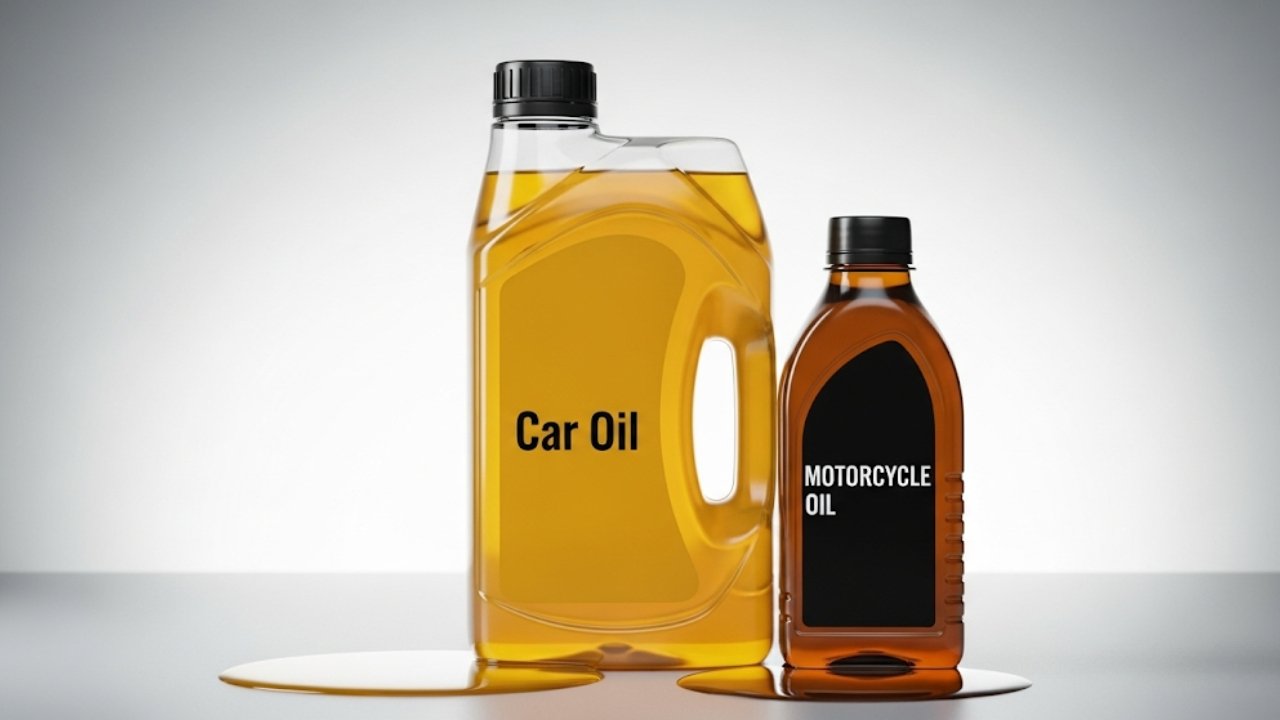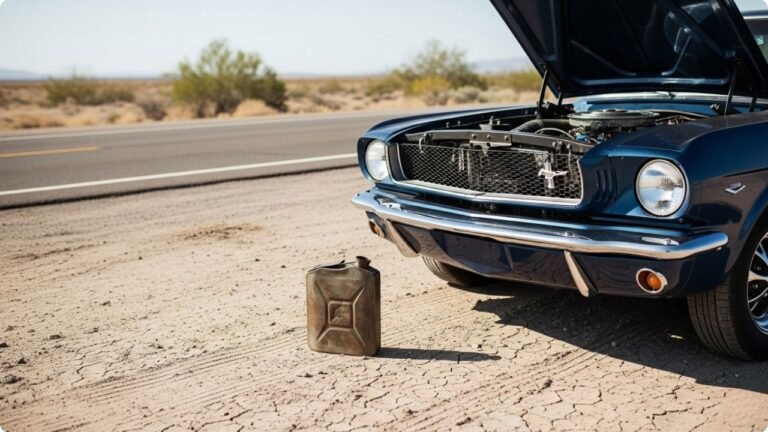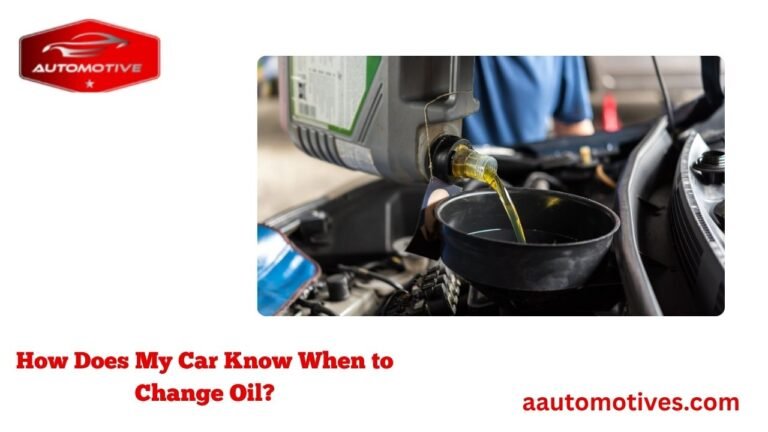Can You Use Car Oil in a Motorcycle? Here’s What You Need to Know

I remember the first time I stared at my nearly empty motorcycle oil reservoir. It was a hot afternoon. I was prepping for a long ride through the hills of Chittagong. My bike was my pride—shiny, agile, and responsive like a good friend. But that day, I was out of motorcycle oil.
In my garage sat a fresh container of car engine oil—premium brand, fully synthetic. The question popped up in my head: “What’s the harm in using car oil in my motorcycle?”
If you’ve ever found yourself asking this too, you’re not alone.
This article dives deep into the risks, logic, and real-life implications of using car oil in motorcycle engines. We’ll break things down in simple language, offer practical insights, and give you a fair, friendly view of the truth—backed by experience and engineering facts.
In This Article
- 1 Why People Consider Using Car Oil in Motorcycles
- 2 What Makes Motorcycle Oil Different from Car Oil?
- 3 The Hidden Cost of Using Car Oil in a Motorcycle
- 4 Motorcycle Engines Are Not Car Engines: A Technical Perspective
- 5 Exceptions: When Is It (Barely) Acceptable?
- 6 Real-Life Anecdote: I Tried It Once (And Regretted It)
- 7 Signs You’ve Used the Wrong Oil in Your Bike
- 8 Long-Term Damage: What Happens If You Keep Using Car Oil in a Motorcycle?
- 9 Choosing the Right Motorcycle Oil: What You Should Actually Use
- 10 Mechanics Agree: Don’t Risk It
- 11 Common Myths About Using Car Oil in a Motorcycle
- 12 Practical Tips for Emergencies
- 13 FAQs: Using Car Oil in Motorcycle (Answered Simply)
- 13.1 1. Can I use car oil just once in my motorcycle?
- 13.2 2. What happens if I keep using car oil in my motorcycle?
- 13.3 3. How do I know if the oil is causing clutch slip?
- 13.4 4. Can synthetic car oil be used in bikes?
- 13.5 5. What should I do if I accidentally used car oil in my bike?
- 13.6 6. Is there any car oil safe for motorcycles?
- 13.7 7. Is motorcycle oil really worth the extra price?
- 13.8 8. How often should I change motorcycle oil?
- 14 Conclusion: Save Your Bike, Choose the Right Oil
Why People Consider Using Car Oil in Motorcycles

Here are a few reasons that tempt people:
-
Convenience – Car oil is more widely available.
-
Cost – Car engine oil is sometimes cheaper per liter.
-
Emergency – You need oil now, but only have car oil in reach.
-
Confusion – Some think oil is oil; same lubricant, different bottle.
Honestly, I’ve felt that pull too. When you’re low on funds or stuck in a rural area, it’s easy to think they’re interchangeable.
But they’re not.
There are key differences in the additives, viscosity, and friction properties that make car oil and motorcycle oil quite different—even if they look similar.
What Makes Motorcycle Oil Different from Car Oil?
Imagine trying to use cooking oil to lubricate a bicycle chain. It might work for a few turns, but over time, it causes more harm than good. The same logic applies to using car oil in motorcycle engines.
Here’s what sets motorcycle oil apart:
| Feature | Motorcycle Oil | Car Oil |
|---|---|---|
| Clutch Compatibility | Wet clutch safe (friction optimized) | Too slippery; can cause clutch slip |
| Shear Resistance | Higher—suitable for gearboxes | Lower—geared for piston lubrication |
| Additives | Balanced detergents, no friction mods | Includes friction modifiers |
| Heat Tolerance | Built for higher RPM and engine heat | Normal heat range for car engines |
Most motorcycles use a wet clutch system. That means the engine oil isn’t just cooling the engine—it’s also lubricating the clutch plates and gearbox.
So, if you use car oil in a motorcycle, the friction modifiers in car oil can make your clutch slip like a bar of soap in the shower. That’s not just bad for performance—it’s dangerous.
The Hidden Cost of Using Car Oil in a Motorcycle
I once met a rider who used car oil in his 150cc commuter bike for months. He figured oil is oil—and he was saving money.
But after about 6,000 km, his bike started slipping gears. Acceleration dropped. The engine whined louder than usual. Eventually, the clutch burned out. It cost more to fix than he saved.
Here’s what you risk by using car oil in motorcycle engines:
-
Clutch Slippage: You twist the throttle, but the power doesn’t reach the wheels.
-
Faster Engine Wear: Car oil breaks down faster in high-RPM motorcycle engines.
-
Overheating: Car oil can’t handle the extreme heat motorcycles generate.
-
Gear Damage: Car oils aren’t built to cushion transmission gears.
In short, you could end up paying more in repairs than you save by skipping motorcycle-specific oil.
Motorcycle Engines Are Not Car Engines: A Technical Perspective
Let’s talk engines—but in a simple way.
A car engine runs cooler. It has more room for airflow. It also spins slower—low RPMs.
A motorcycle engine, especially a sport or performance model, spins faster—high RPMs, tight spaces, hotter operating temps.
This means:
-
Motorcycle oils need better thermal stability.
-
They must retain viscosity even under shearing forces.
-
They need to resist breakdown in shared engine-clutch-gear systems.
In contrast, car engines have separate systems for the engine, transmission, and clutch. They don’t need oil that multitasks. Their oils have additives for fuel economy, not multi-part performance.
That’s why using car oil in motorcycle machines is like trying to run a marathon in flip-flops—technically possible, but unwise.
Exceptions: When Is It (Barely) Acceptable?
Are there exceptions to this rule? Can using car oil in motorcycle engines ever be okay?
Yes—but only in very specific situations:
-
In older bikes that don’t have a wet clutch system
-
In emergency situations, when no other option is available
-
Just for short-term use, like a few kilometers until proper oil is added
If you ever do use it:
-
Avoid synthetic car oil with high friction modifiers
-
Choose car oils with no energy-conserving labels (check the API donut)
-
Replace it as soon as you can with motorcycle oil
But let’s be honest: this is like using duct tape to fix a water pipe. It might hold for a while—but not forever.
Real-Life Anecdote: I Tried It Once (And Regretted It)
Let me be real with you—I’ve tried using car oil in motorcycle once.
It was during a trip to Sylhet. I was 40 kilometers from the nearest town, and my oil level dipped below the minimum mark. All I had in the backup box was 5W-30 car oil.
I poured it in. The ride felt fine for the first 10 minutes. But after a few hours, my clutch began to feel “spongy.” When I twisted the throttle, the bike revved—but didn’t move as fast.
It was subtle at first. But by the end of the day, I felt the performance difference.
Lesson learned.
I flushed the oil and replaced it with JASO MA2-rated motorcycle oil the next day. The ride became smooth again—like my bike was breathing easy.
Signs You’ve Used the Wrong Oil in Your Bike
Here’s a quick table to help you diagnose problems if you’ve already used car oil:
| Symptom | Possible Cause |
|---|---|
| Clutch Slipping | Friction modifiers in car oil |
| Strange Engine Noise | Inadequate protection at high RPMs |
| Gear Shifting Problems | Poor shear resistance in car oil |
| Excessive Heat | Low heat tolerance in car oil |
| Reduced Fuel Efficiency | Inappropriate viscosity or breakdown |
If you spot any of these signs, change your oil immediately.
Long-Term Damage: What Happens If You Keep Using Car Oil in a Motorcycle?
Let’s say you ignore the risks and keep pouring car oil into your motorcycle engine—what happens over time?
Honestly, nothing explosive happens right away. That’s the trap. But internally, your bike begins to suffer silently, like someone eating fast food every day and expecting to stay fit.
Here’s what might occur in the long run:
-
Clutch system failure due to constant slipping
-
Worn-out camshafts and pistons from lack of shear resistance
-
Gearbox deterioration, making shifting rough and noisy
-
Oil leaks as gaskets break down under unusual pressure
-
Increased engine heat, leading to performance drops and engine seizing
The worst part? These failures don’t always show up clearly. Sometimes you’ll just feel your bike becoming “lazy”—less responsive, louder, thirstier. By the time the damage is obvious, it’s expensive to fix.
Using car oil in motorcycle is like feeding a lion cat food. Sure, it’s still meat—but it doesn’t meet the needs of that beast.
Choosing the Right Motorcycle Oil: What You Should Actually Use
If you’re wondering, “Okay, so what should I use instead?”—here’s what you need to look for when buying the right oil for your bike.
-
Check your manual first. Your manufacturer usually recommends a specific grade and oil type (e.g., 10W-40, JASO MA2).
-
Look for JASO ratings – JASO MA or MA2 are meant for motorcycles with wet clutches.
-
Avoid “energy conserving” oils – these are typically car oils with friction modifiers.
-
Synthetic vs Mineral vs Semi-Synthetic
-
Mineral oil: Good for older engines or low-stress bikes.
-
Semi-synthetic: Balanced and budget-friendly.
-
Fully synthetic: Best for performance bikes and hotter climates.
-
| Oil Type | Best For | Price | Lifespan |
|---|---|---|---|
| Mineral | Older engines, small commuters | Low | 2,000–3,000 km |
| Semi-Synthetic | Mid-range use, city + highway mix | Medium | 4,000–6,000 km |
| Fully Synthetic | High performance, racing, touring | High | 7,000–10,000 km |
The best practice? Always use motorcycle-specific oil, even if it costs a bit more. It’s an investment in your engine’s long life and smooth performance.
Mechanics Agree: Don’t Risk It
I spoke with a seasoned bike mechanic named Rafiq in Dhaka. He’s worked on bikes for over 25 years. His take on using car oil in motorcycle engines?
“Bhai, the engine will run. But not for long. I’ve seen people ruin 1 lakh taka bikes just to save 300 taka on oil.”
He’s not wrong. Most mechanics will tell you the same thing—shortcuts like this lead to regrets.
Another mechanic mentioned how even premium car oils like Mobil 1, Castrol Edge, or Shell Helix can cause clutch problems if used in a motorbike.
The engine oil is the blood of your bike. You wouldn’t give a child adult medicine, right? Same logic applies here.
Common Myths About Using Car Oil in a Motorcycle
Let’s bust some common myths that confuse riders:
Myth 1: “Oil is oil. It doesn’t matter.”
Fact: Car and motorcycle oils are formulated differently for distinct engine types. Their additive packages and heat tolerances vary.
Myth 2: “I used car oil once, and nothing bad happened.”
Fact: Damage builds gradually. One use might not kill your engine—but repeated use will shorten its life.
Myth 3: “I use fully synthetic car oil. That should be better, right?”
Fact: Many fully synthetic car oils have more friction modifiers, making them worse for wet clutches in bikes.
Myth 4: “Car oil works better in hot weather.”
Fact: Motorcycle oils are engineered to handle hotter temps and higher RPMs better than car oils.
These myths spread fast because people share partial truths or isolated experiences. But when it comes to using car oil in motorcycle, the science doesn’t lie.
Practical Tips for Emergencies
Still, life isn’t always perfect. If you’re stranded or in a bind, here’s how to make the best of a bad situation:
-
Use only non-energy conserving car oil (Check for “API SL/SM/SN” without energy-conserving label)
-
Avoid synthetic oils unless they are MA2-rated
-
Use the same viscosity rating your bike needs (e.g., 10W-40)
-
Ride gently—avoid high RPMs, hard acceleration, or long rides
-
Replace with motorcycle oil ASAP—don’t wait for the next service interval
Think of it like using a raincoat as a blanket. It’ll do the job in a pinch, but it’s not meant for that.
FAQs: Using Car Oil in Motorcycle (Answered Simply)
1. Can I use car oil just once in my motorcycle?
Yes, in an emergency. But flush it out quickly. It’s not built for bike engines.
2. What happens if I keep using car oil in my motorcycle?
Your clutch may slip, engine may overheat, and gears may wear out early.
3. How do I know if the oil is causing clutch slip?
You’ll notice loss of acceleration even though the engine revs normally. That’s a common sign of friction modifier interference.
4. Can synthetic car oil be used in bikes?
Only if it meets JASO MA or MA2 standards. Most don’t. So, check labels carefully.
5. What should I do if I accidentally used car oil in my bike?
Change it ASAP. Flush the system and add proper motorcycle oil. Keep an eye on performance afterward.
6. Is there any car oil safe for motorcycles?
Some high-end oils marketed for both vehicles exist, but they must meet motorcycle oil specs too. Always look for dual certifications like JASO MA2 + API SN.
7. Is motorcycle oil really worth the extra price?
Absolutely. It prevents expensive repairs, ensures smooth gear shifting, and extends your engine’s life.
8. How often should I change motorcycle oil?
It depends on your oil type:
-
Mineral: Every 2,000–3,000 km
-
Semi-synthetic: Every 4,000–6,000 km
-
Synthetic: Every 7,000–10,000 km
Conclusion: Save Your Bike, Choose the Right Oil
So, let’s wrap this up simply.
Using car oil in motorcycle engines might feel convenient or cheap—but it’s not worth the risk.
You don’t see athletes drinking soda before a race, right? That’s because what goes inside affects performance on the outside. Your motorcycle deserves oil made for its needs—not leftovers from your car’s maintenance shelf.
I’ve made this mistake, and I’ve learned my lesson. So take it from someone who’s been there: spend the extra money, buy proper motorcycle oil, and your engine will reward you with smooth rides, better fuel economy, and fewer headaches.






